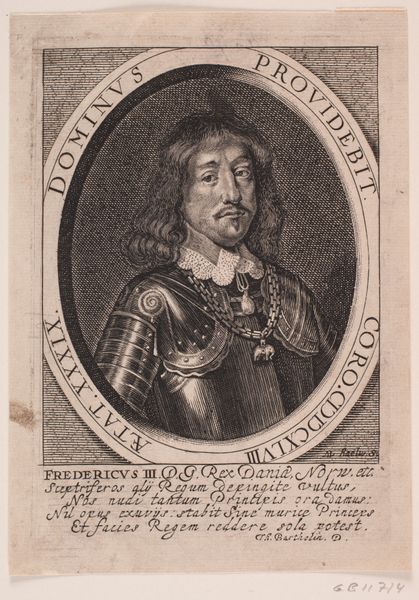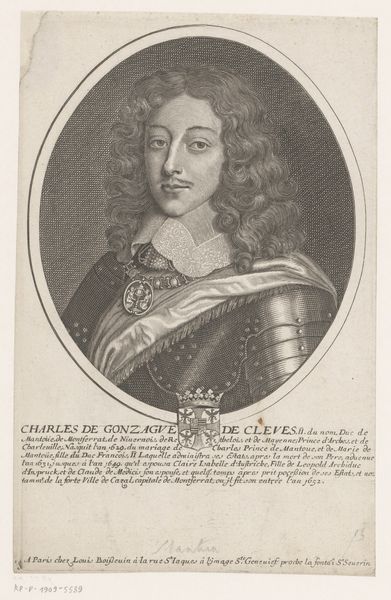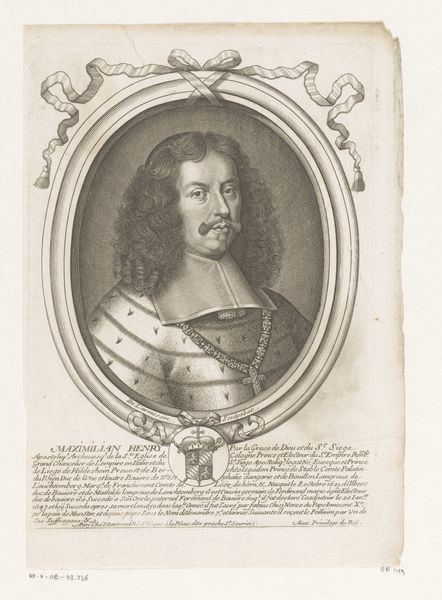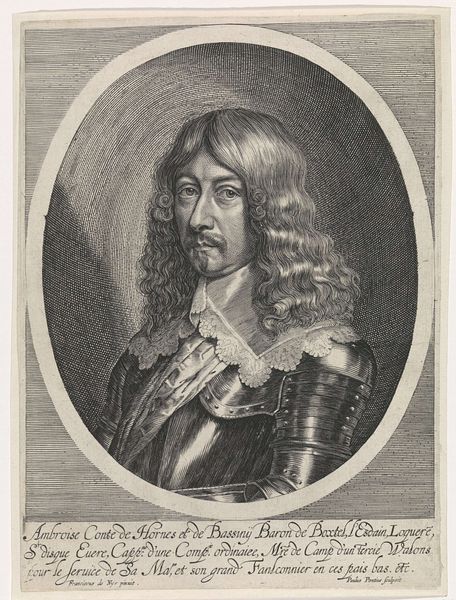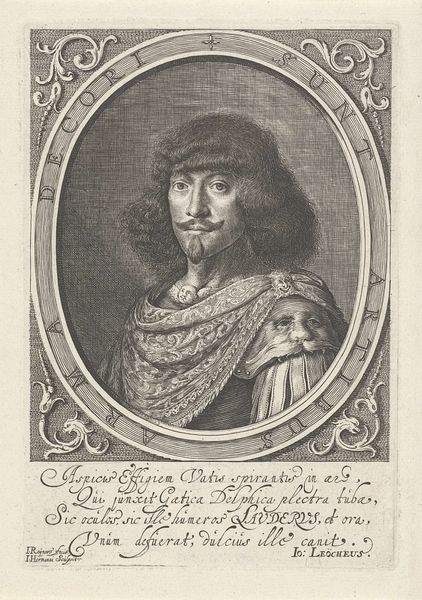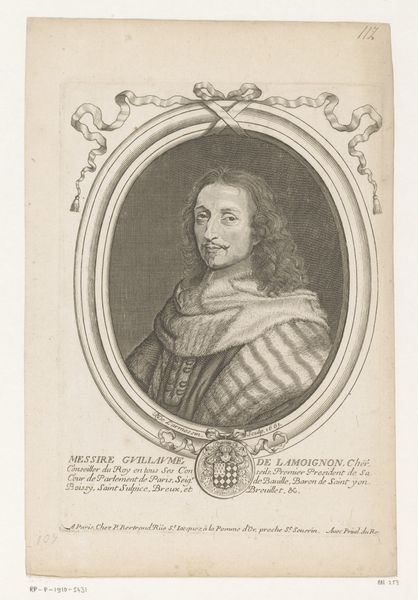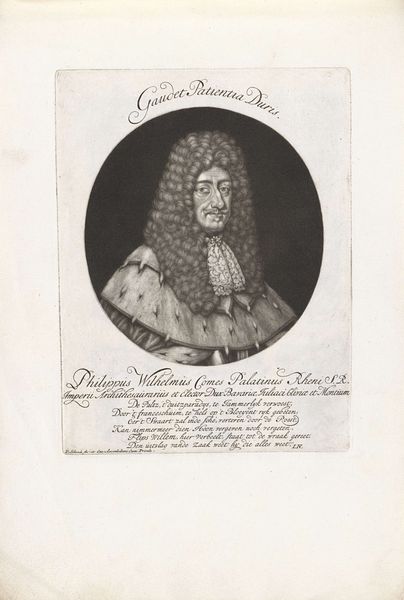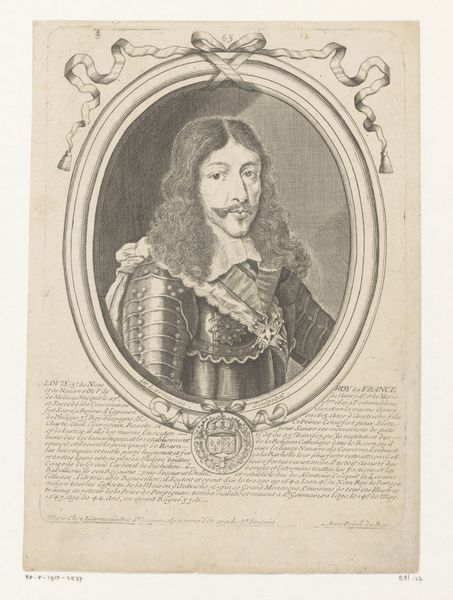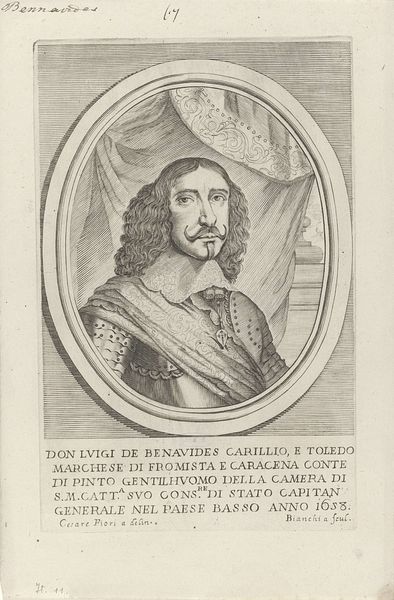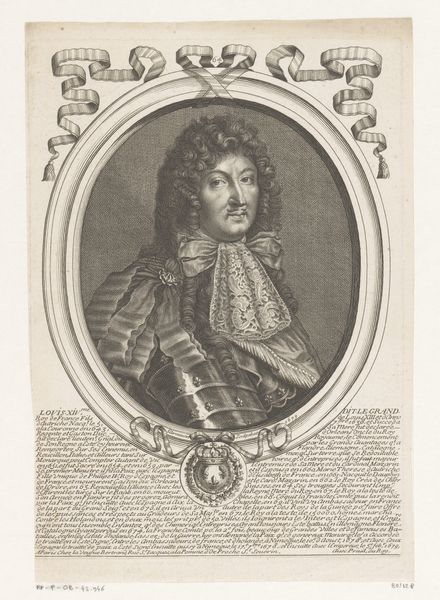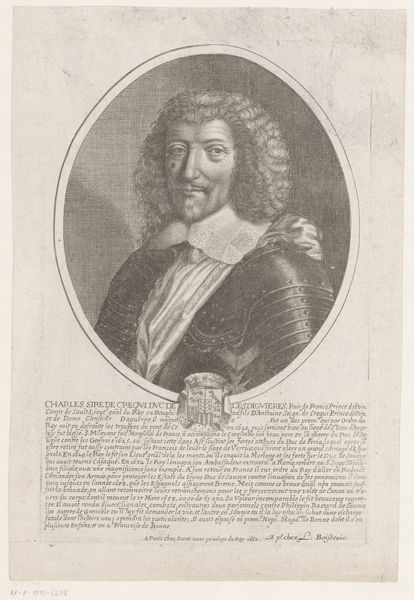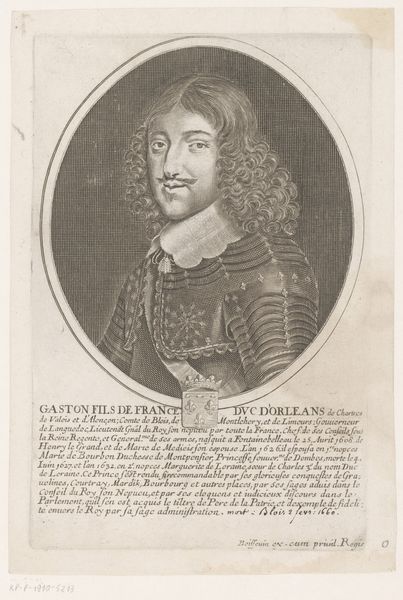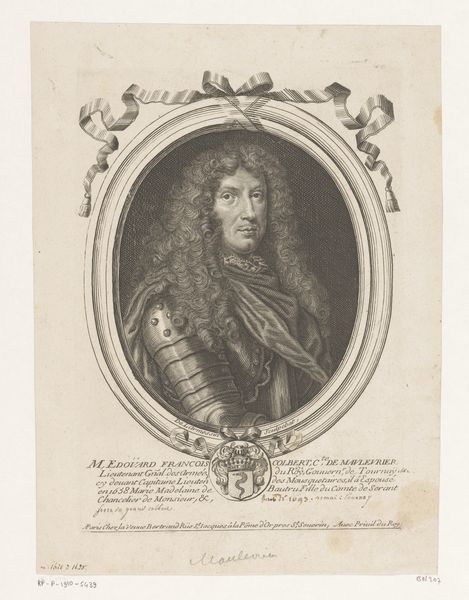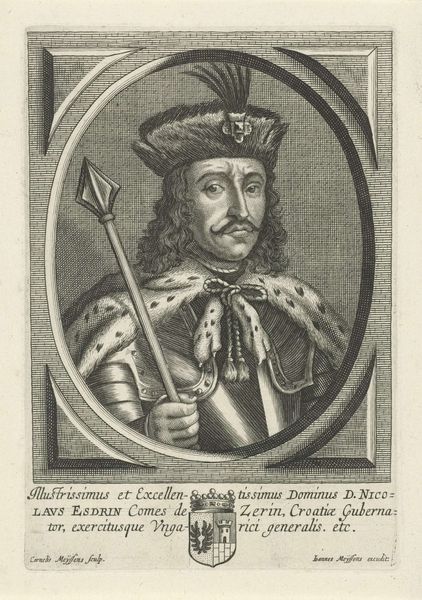
metal, engraving
#
baroque
#
metal
#
old engraving style
#
history-painting
#
engraving
Dimensions: height 224 mm, width 155 mm
Copyright: Rijks Museum: Open Domain
Editor: Here we have Johann Alexander Böner's "Portret van Henri, duc de Guadagne," created in 1674. It's an engraving on metal, and the detail is quite striking. It seems like such a formal, almost stoic depiction. What do you see in the work, from a purely formal perspective? Curator: Immediately, the sharp contrasts within the monochrome field command attention. Consider the textures: the meticulously rendered, flowing hair against the rigid, reflective armour. It’s a study in opposing visual languages, isn't it? Böner skillfully uses line and shadow to define form, creating a tension between surface and depth. The oval frame further isolates and elevates the figure, directing our gaze. Editor: I hadn't thought about the frame's effect that way. Is the inscription also important to the work’s formal qualities? Curator: Certainly. Its placement isn't merely informative; it anchors the composition. The carefully chosen lettering, aligned to emphasize structure, adds another layer to the overall design. Böner is consciously constructing an image designed to evoke a sense of presence. Does the execution align with the Baroque sensibilities in your view? Editor: Definitely! It strikes me as very Baroque now that you mention it. Thank you for pointing out the contrasts. I tend to miss things at first glance. Curator: Formal analysis sharpens perception. Examining art in terms of its inherent visual components allows access beyond cultural background. I appreciate this reminder of Baroque engraving, and how texture adds depth.
Comments
No comments
Be the first to comment and join the conversation on the ultimate creative platform.
